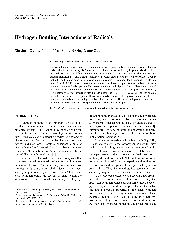摘要
Hydrogen bonding interactions of organic radicals are systematically studied using diverse ab initio and density functional theory (DFT) methods. It is found that open-shell hydrogen bonds with radical proton donors are more difficult to model than those with radical proton acceptors. The DFT methods perform significantly worse than the unrestricted second order Moller-Plesset perturbation (UMP2) method in both geometry optimization and interaction energy calculations for the open-shell hydrogen bonds. The UB3LYP method seriously underestimates the donor-acceptor distances and overestimates interaction energies for the open-shell hydrogen bonds with radical proton donors. Nevertheless, use of the UBH&HLYP functional to study the open-shell hydrogen bonds is still acceptable. Furthermore, it is necessary to use sufficiently flexible basis sets, such as 6-311++G(2df,2p), to get reliable interaction energies for the open-shell hydrogen bonds. The open-shell proton donors are stronger Lewis acids than the corresponding closed-shell proton donors. The open-shell proton acceptors are weaker Lewis bases than the corresponding closed-shell proton acceptors.
- 出版日期2005-6
- 单位中国科学技术大学
